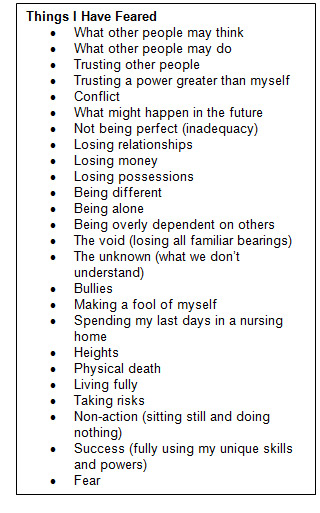TOOLS FOR TRANSFORMATION – MEDITATION
2012
Two Perspectives on Meditation as a Tool for Transformation
Dr. Amit Nagpal, New Delhi, India, and
Dr. Janet Smith Warfield, Florida, USA
_______________________________________________________________________________________
Dr. Amit Nagpal’s Perspective
 For introverts and silence lovers, meditation is probably the most powerful personal transformation tool. While chanting and Vipassana may be good examples of formal meditation techniques, living in the moment, silence and simply observing your breath may be good examples of informal meditation techniques.
For introverts and silence lovers, meditation is probably the most powerful personal transformation tool. While chanting and Vipassana may be good examples of formal meditation techniques, living in the moment, silence and simply observing your breath may be good examples of informal meditation techniques.
Here are some of the major benefits of meditative/contemplative practices:
Finding Joy and Peace
The conscious mind is the source of stress and limiting beliefs. Silencing the conscious mind helps us not just relieve stress but rather find peace and joy. I personally believe, “Meditation should not be used as a reactive tool for handling stress but rather used as a proactive tool for creating joy.” In fact my collaborative book (with 19 thought leaders from 6 countries) highlights that money is not the only source of joy but connecting with self, discovering our deep passion and so on are sources of joy which the society is yet to fully tap.
Understanding our Passion and Purpose
Self-reflection with the help of meditation is the best way to discover our true and deepest passion. We can use many spiritual and non-spiritual tools to discover our passions but using meditation can make the process of discovery much faster. If you feel more comfortable with self reflection or plain contemplation or sitting silently surrounded by nature rather than meditation, it is very much fine. The sub-conscious provides us the wisdom, intuition and clarity of thinking to find out what we truly want. We have many passions in life or many hobbies we feel passionate about, but it takes time to discover our deep passion. Here is a post I wrote, “Discover Your Deepest Passion.”
Boosting Our Creativity
Meditation releases Theta waves which boost our creativity and provide us inspiration. My advice to creative professionals is to practice meditation to see exponential growth in their creativity. Meditation boosts our creativity through reflection, though practice and repetition play a critical role in honing creative skills. A desire to boost creativity through meditation can create stress and expectation, which may backfire. So just meditate to relax and improved creativity will be a side benefit. Here is an interesting post, “How I Regained my Lost Creativity.”
Beauty and Charisma
When one has peace within, the face being the index of the mind reflects that as peace written all over you which makes you look beautiful and attractive. Inner beauty comes from a stress-free mind and a confident, giving personality. Someone has rightly said, worry is like a rocking chair; it gives you something to do, but it doesn’t get you anywhere. Here is a detailed post on “Beauty and Charisma through Meditation.”
Tapping the Sub-Conscious
Prayer and meditation also increase levels of dopamine, often referred to as the brain’s pleasure hormone. During meditation the conscious mind gets silent. As a result, we are able to hear the sub-conscious mind or we can say that the sub-conscious gets activated. Then begins the sweet journey of creativity, joy, wisdom, intuition, awareness and in fact, a point of ecstasy and oneness, where none of these matter.
(If you fail at meditation or have failed in the past, then you must read this post.)
_____________________________________________________________________________
Dr Amit Nagpal is a Personal Branding Consultant and Deepest Passion Coach. He is based in New Delhi, India and specializes in personal branding with a holistic touch. His philosophy is, “Enlarge as a Human Being, Excel as a Social Media Being and Evolve as a Personal Brand.”
______________________________________________________________________________
Dr. Janet Smith Warfield’s Perspective
Meditation is a mind-body-spirit practice originating in ancient Eastern spiritual traditions and used throughout the world for thousands of years. It calms the conditioned mind, relaxes the body, and allows the practitioner to connect to a much larger, more encompassing energy, variously labeled “God”, “The Tao”, “Higher Power”, “Allah”, “Jehovah”, “Universal Consciousness”, “YHWH”, “intuition”, “creativity”, Cosmic Energy. The practitioner learns to trust this power because of the amazing growth, freedom, and spiritual strength it provides.
Benefits of Meditation:
- Relaxed awareness
- Stress release
- Letting go of fear
- Channeling rage into constructive action
- Mental self-regulation
- Improved focus
- New ways of thinking
- Single pointed concentration
- Correct understanding
- Humility
- Effortless speech
- Effortless action
- Building internal energy
- Developing compassion, love, patience, forgiveness
- Openness to synchronicities that effortlessly resolve challenges
- Indestructible sense of well-being
- Bliss
- Transformation
Enhance Your Experience with:
- A quiet location
- A comfortable position
- An open attitude
- Mental focus
Some Forms of Meditation:
- Mindfulness meditation
- Transcendental meditation
- Mantra meditation
- Zen Buddhist meditation
- Breath meditation
- Relaxation response
- Action meditation
- Sound meditation
- Reiki meditation
- Guided meditation
- HeartMath meditation
- Walking meditation
- Crystal bowl meditation
- Chanting
- Rituals
- Jungian meditation
Areas in Which Scientific Research is Being Done:
- Relief of chronic back pain
- Minimizing hot flashes in menopausal women
- Relieving asthma
- Improving the ability to focus and prioritize
- Releasing stress in caregivers of elderly patients with dementia
- Fibromyalgia
- Cancer
- Hypertension
- Psoriasis
- Changing brain and immune functions in positive ways
- Anxiety disorders
- Women’s health
Here is one example of a guided meditation:
Here are some other resources:
http://www.youtube.com/watch?v=IfFJ6BI1l_E
http://www.youtube.com/watch?v=mx-cJrVUBPE
https://www.youtube.com/watch?v=7wbC2n-9FKI
https://www.youtube.com/watch?v=TWttCv0p6WQ
Enjoy!
________________________________________________________________________________________
Dr. Janet Smith Warfield serves wisdom-seekers who want understanding and clarity so they can live peaceful, powerful, prosperous lives. Through her unique combination of holistic, creative, right-brain transformational experiences and 22 years of rigorous, left-brain law practice, she has learned how to sculpt words in atypical ways to shift her listeners into experiences beyond words, transforming turmoil into inner peace. For more information, see wordsculptures.com, janetsmithwarfield.com, and wordsculpturespublishing.com.
_________________________________________________________________________________________


![JanetSmithWarfield300[1]](http://janetsmithwarfield.com/wp2/wp-content/uploads/2011/12/JanetSmithWarfield30011-150x150.jpg)
 I had no problem with the first three requests. I never chewed gum, I didn’t often speak in front of strangers, and being punctual mattered.
I had no problem with the first three requests. I never chewed gum, I didn’t often speak in front of strangers, and being punctual mattered.



Comment